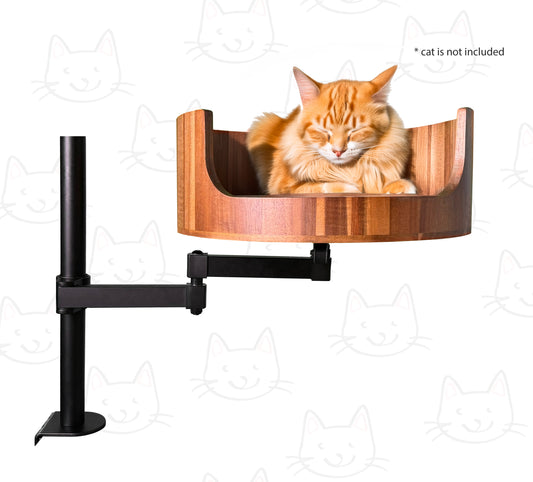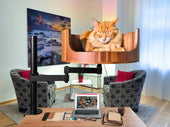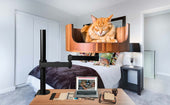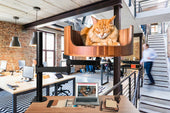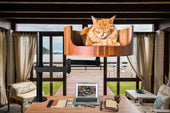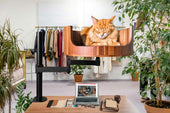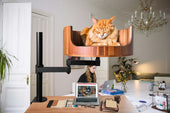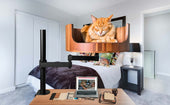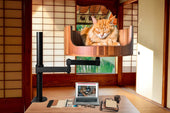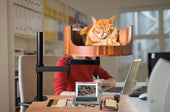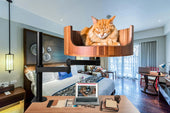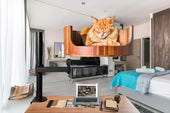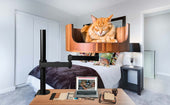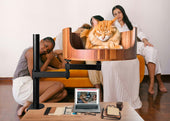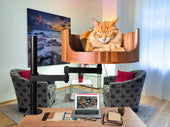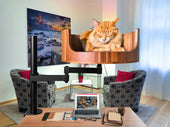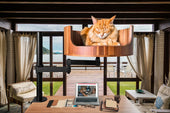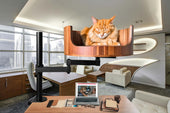
Why Do Cats Flip Their Tails: Understanding Feline Behavior
Share
Cats are fascinating creatures with complex behaviors that often leave us questioning their motives. One of the most intriguing behaviors exhibited by cats is the act of flipping their tails. Whether they are slowly swishing their tails back and forth or frantically flicking them, it always seems to be a sign of something deeper going on in their minds. In order to truly understand why cats do this, it is important to delve into the world of feline behavior and communication.
In this article, we will explore the various reasons why cats flip their tails, ranging from signs of agitation or aggression to expressions of contentment and playfulness. By dissecting these behaviors and learning to interpret them, we can gain insight into our feline friends' emotions and needs. Understanding why cats flip their tails can help us build stronger bonds with our pets and provide better care for them in all aspects of their lives. So, grab a cozy spot next to your favorite feline companion and prepare to unravel the mysteries behind this curious behavior.
1. Cats flip their tails as a form of communication, indicating their mood or intentions to those around them.
2. Understanding tail language can help cat owners interpret their pet's behavior and respond accordingly.
3. Tail flipping can be a sign of agitation, excitement, or even playfulness in cats.
4. Cats may also flip their tails as a way to maintain balance while walking or jumping.
5. Paying attention to a cat's tail movements can provide valuable insights into their emotional state and help strengthen the bond between pet and owner.
## The Meaning Behind Tail Flipping
Tail flipping is a common behavior in cats that can communicate a variety of emotions and messages. When a cat flips its tail rapidly back and forth, it usually signifies irritation, frustration, or aggression. This can be seen when a cat is being teased by a playful kitten or when it's approached by a dog. On the other hand, slow and deliberate tail flips may indicate contentment or curiosity. Understanding the context in which tail flipping occurs can help decipher a cat's mood and prevent unwanted interactions.
## Body Language Cues to Look For
While tail flipping is a significant indicator of a cat's emotional state, it is essential to consider other body language cues to accurately interpret feline behavior. For example, dilated pupils, flattened ears, raised hackles, and vocalizations can all provide additional context to a cat's tail flipping. Observing a cat's overall posture and movements can help paint a more complete picture of its feelings and intentions. By paying attention to these subtle signals, cat owners can better respond to their pets' needs and avoid potential conflicts.
## Managing Tail Flipping Behavior
If a cat consistently exhibits excessive tail flipping or other signs of distress, it may be beneficial to address the underlying issues causing the behavior. This could involve reducing stressors in the cat's environment, providing ample opportunities for play and exercise, or seeking guidance from a veterinarian or animal behaviorist. By creating a comfortable and enriching environment for a cat, owners can help minimize negative behaviors like tail flipping and foster a harmonious relationship with their feline companions.
Frequently Asked Questions
Why do cats flip their tails?
Cats often flip their tails as a form of communication. It can indicate excitement, frustration, fear, or aggression. Understanding your cat's body language along with their tail movements can help you interpret their emotions more accurately.
Is tail flipping a sign of a health issue?
In some cases, excessive tail flipping or twitching can be a sign of an underlying health issue such as nerve damage, pain, or hyperthyroidism. If you notice persistent abnormal tail movements in your cat, it's best to consult with a veterinarian for a thorough check-up.
Can a Cat Nest help with tail flipping behavior?
A Cat Nest can provide a cozy and safe space for your cat to relax and destress, which may help reduce tail flipping behavior caused by anxiety or overstimulation. Providing a comfortable environment for your cat to retreat to can help them feel more at ease.
In conclusion, providing your cat with a Desk Cat Bed can help alleviate stress and anxiety, which may be one of the reasons why cats tend to flip their tails. This cozy and comfortable space will give your feline friend a sense of security and a designated spot to relax and unwind. By investing in a Desk Cat Bed, you not only provide your cat with a peaceful retreat but also promote their overall well-being. Give your cat the gift of a calming sanctuary with a Desk Cat Bed today and watch as their tail flips with contentment.

